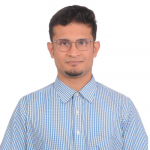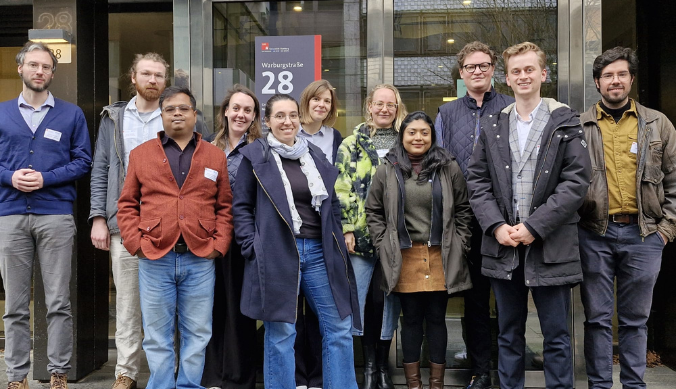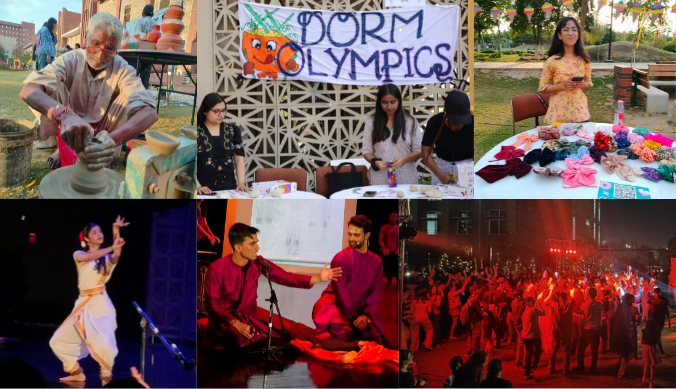Using the interconnectedness among YIF courses to navigate the reality outside it
Each course, like a neuron, fires the other, and lights up the whole, by association, which is incidentally exactly what brain researchers have proven in how we remember stuff

Aayushman Harish Narayan
28 August, 2023 | 4m readEmotionally, mentally, spiritually and physically, the Young India Fellowship was a roller-coaster for me. On an overarching level, I say so because the programme confronted my present emotional state and helped me reconcile myself with the past, increased my self-awareness exponentially, got me in touch with the value of building and creating that I had unconsciously lost after college (losing the reading for the sake of reading habit was the catalyst) and finally got me back into playing football regularly and putting the body through the grind. That said, it was not roses all the way. The thorns actively helped the roses bloom, whilst poking me to ooze blood on days when a sacrifice was forthcoming.
A core reason and attraction for coming to the fellowship had been the diversity of the courses being offered. I had an intellectual understanding of the potential advantages of a multidisciplinary curriculum. However, what does it really mean? For instance, the more I understood the world around me, it was becoming obvious that leadership demanded an intuitive know-how of what I love calling “the merge”, which is the approach of looking at the world from the perspective of the unification of four key branches of all human knowledge, science, engineering, humanities and arts.
Trust me as I say this, I had no idea about articulating this fact as clearly as I am doing now. We know a lot of things intellectually, however, a glaring void in our heads also means that it lacks substance because many times you would have a nagging sense that you are bluffing your way into discussions for the sake of presenting an argument. Therefore, I hoped that connecting all the courses together in one grand, interwoven web of knowledge, alongside improving our habits of reading and writing regularly, would put me in a better place to navigate reality.
All that was needed now was to actually sit through the courses, grasp their fundamentals, feel through the existential crisis of knowing you cannot specialise and go into their depths in that present moment of time and grind a way through to understand them intuitively. Initially, in the first three months, it was not working. I struggled to connect Foundations of Leadership, Statistical Thinking, Makers of Modern India and Shakespeare and the World to each other. But now I can.
Here it goes: Leadership demands that you visualise your future and lead your people in the present towards that direction if you can stand the rigour of being the leader you want to be (Prof. Dwight Jaggard); create consensus among the group and collect data and information about the future you think feels right, change the vision gracefully if it need be when the data tell you are in the wrong (Prof. Santosh Venkatesh); find out what
happened in the past because that helps you avoid common mistakes, especially if it is a social cause or a cause that goes against the grain of tradition and conservatism in whatever domain you’re going to make a mark (Chancellor Rudrangshu Mukherjee) and finally, communicate a relatable story to every stakeholder who you think will play an important role in helping this future manifest (Prof. Madhavi Menon and Prof. Jonathan Gil Harris).
This template, needless to say, is a repeatable one and will change depending on the person writing this, for the individual reigns supreme and their own worldview mightily differs from my own. I come from a family that has always been a passionate advocate for the humanities and arts. However, we spend our work hours in the sciences and engineering. After I graduated in mechanical engineering, I found myself back in Bangalore riding the technology wave post-Covid, consumed by the obsession and manic frenzy all around me on one hand, who were in touching distance of global technology and capital flows directly or indirectly and on the other, communities who were completely out of sync with it, consigned to make do with limited avenues, owing to what I now think of as a “great divergence” in language, ways of thinking and information sources.
We all observe multiple things in our day-to-day lives, questions of socio-economic inequality, injustice, and suffering alongside questions of the natural world and societal relations arise from time to time.
The interconnectedness of the courses at the fellowship will help us to find interconnected answers to all such questions.
As the fellowship surged ahead, The New Geography of the Information Age was a mind-bender alongside Language, Politics and Society in India. Here is their interconnected self: the long arc of technology has manifested itself in societies across the world; as hunter-gatherers, humanity did not grapple with scale, but now, as towns, cities and nations, we navigate scale in goods, services and information every second (Prof. Debayan Gupta); how did this arise?
Language can be said to be the first social technology humanity invented (Prof. Kathryn Hardy), upon which a triad of scaling technologies, from the printing press to the internet unleashed an accelerative force in an individual’s relationships with society, rewiring our understanding of who gets to govern, who gets to do what and who has a say in what we do on a daily basis.
These two courses on their own cannot account for an intuitive understanding of the world around us, but as an interconnected whole, these two courses can probably account for an intuitive understanding of the world around us.
However, with that said, the ideal scenario would be to complement our intuitive understanding with an equally intuitive articulation of writing it down or explaining it to others. The Critical Writing course is unique in the sense that it lasts through the fellowship alongside the Experiential Learning Module. You can think of all of them as one grand mind map, with threads connecting each course to the other, very similar to how neuronal connections look in our brains. Each course, like a neuron, fires the other, and lights up the whole, by association, which is incidentally exactly what brain researchers have proven in how we remember stuff. This, in a nutshell, sums up the interconnectedness of each course in the fellowship for me.
(Aayushman Narayan is a Young India Fellow from the batch of 2023. He is long immersed in web3 and is passionate about society, networks and the Solarpunk philosophy)
Study at Ashoka













